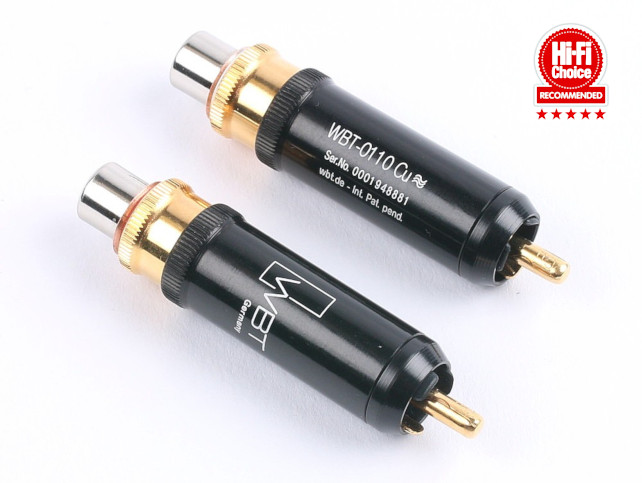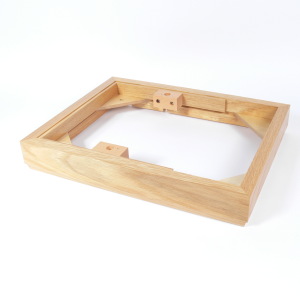Hi-Fi Choice, In-line Attenuators Review
Wednesday, 7th September 2022
Hi-Fi Choice magazine reviews our popular WBT In-line Attenuators in their September 2022 issue.

When a manufacturer designs an amplifier, they do so with the intention that the volume control will allow a wide range of control over the level of sound coming out of the speakers. The speaker sensitivity will have an effect on this, of course, along with the specific levels of the recording that is playing. Nevertheless, taking these into account, you would expect the volume dial to be effective over a good range of its travel. That’s what you may expect but, sadly, it’s often far from the case in practice.
A common problem
I would hazard a guess that, straight out of the box, most amplifiers you and I have had experience of have had far more limited control over the volume than we would have liked – and sometimes to such a degree that they can be rendered almost unusable with material recorded at higher levels. As Neville Roberts observes in his review, “it can be extremely irritating to switch over from, say, the radio to a digital streamer and then suddenly find yourself deafened when you start to play a track”. Quite so.
When a manufacturer designs an amplifier, they do so with the intention that the volume control will allow a wide range of control over the level of sound coming out of the speakers.

Sadly, in practice, this is rarely the case. The issue here is what we call ‘input overload’, and it happens because the output signal of the source component is too high for the amplifier’s input sensitivity. The result is a volume knob which gives you very little control and becomes far too loud far too soon.
Why this is has become the case, we don’t really know, but it’s not even unusual for two components from the same manufacturer to be mis-matched in this way.
In the majority of cases, this happens around the 25%-of-travel mark (when the volume dial gets to around the nine O’clock position) and can be very frustrating. That’s where attenuation comes in…

Attenuation ‘does what it says on the tin’; it literally attenuates the signal coming into the amp, alleviating overload and allowing far more control over the volume.
The reviewer rightly points out that some source components “have a means of adjusting their output level and can easily be tweaked to match those that have a fixed output”. Likewise, some manufacturers, like Meridian, include the ability to adjust the input sensitivity on their preamp inputs, allowing the user to match all their source component levels. This is a very convenient solution, but is also quite rare. In the majority of situations, an ‘external’ source of attenuation is necessary.
We have provided the option to have Kimber interconnects attenuated since the mid-1990s and introduced the in-line versions - featured in this review from Hi-Fi Choice - in 2006, which allowed owners of interconnects from other manufacturers to benefit too. As Neville Roberts points out, we mount the components in the very high quality WBT 0110Cu phono plugs, “to give a good low impedance connection” and thereby mitigate any potential negative effects of an in-line device*.
This principle is born out in practice, with the reviewer stating that “sonically, I am unable to detect any significant difference in audio quality with the In-Line WBT-0110 in place”, confirming that, whilst the “attenuators are a perfect solution for matching your equipment levels” , there is no down side to having the attenuators in the signal path.
Not sure what level of attenuation you need?
Fortunately, as the review points out, “Russ Andrews provides a useful chart on its website to help you work out the correct value you require based on the amplifier input” – click here to find out more.

Magazine: Hi-Fi Choice
Issue: September 2022
Verdict: 5 Stars Recommended
Click here to buy In-line Attenuators
*Indeed, as you can read from a number of customer reviews here, many have found that - by preventing signal overload – the reduction in distortion that the attenuators provide actually has a very positive effect on the sound too.
Written By Simon Dalton
Comments
reviewed by . Mark Doring
10 Apr 2025
We’d recommend -16dB based on those figures.
reviewed by Mark Willis
23 Jul 2023
I assume I need -19db, or even -22db, attenuators. What rating attenuator would you recommend I buy?
-19dB will do the trick nicely!
Regards
Peter
reviewed by Mark
18 May 2023
Thanks for your interest in our Attenuator's. From the figures you've provided, we'd actually recommend -16dB






















